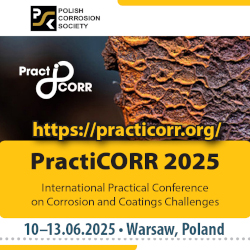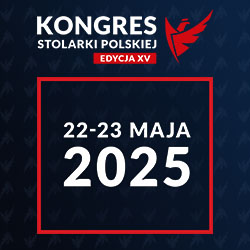Open Access (Artykuł w pliku PDF)
Fusion of point clouds obtained with TLS and a smartphone with a LiDAR sensor to prepare a completed data set for the inventory
dr inż. Joanna Janicka, Uniwersytet Warmińsko - Mazurski w Olsztynie, Wydział Geoinżynierii
ORCID: 0000-0001-6098-2921
dr hab. inż. Wioleta Błaszczak-Bąk, Uniwersytet Warmińsko - Mazurski w Olsztynie, Wydział Geoinżynierii
ORCID: 0000-0001-6169-1579
dr inż. Renata Pelc-Mieczkowska, Uniwersytet Warmińsko - Mazurski w Olsztynie, Wydział Geoinżynierii
ORCID: 0000-0001-7064-6745
prof. dr hab. inż. Miłosława Rutkowska, Politechnika Koszalińska, Wydział Inżynierii Lądowej, Środowiska i Geodezji
ORCID: 0000-0002-7345-9889
Adres do korespondencji: Ten adres pocztowy jest chroniony przed spamowaniem. Aby go zobaczyć, konieczne jest włączenie w przeglądarce obsługi JavaScript.
DOI: 10.15199/33.2023.12.11
Studium przypadku
Streszczenie. W artykule przedstawiono wyniki integracji chmur punktów pozyskanych z wykorzystaniem naziemnego skanera laserowego oraz smartfona z sensorem LiDAR. Kompletny zbiór danych posłużył do inwentaryzacji ściany obiektu zabytkowego klasztoru Franciszkanów. W 2019 r. na wniosek upoważnionej osoby dokonano pomiarów obiektu ze względu na zaobserwowane odchylenie ściany budynku spowodowane osiadaniem fundamentów budowli i rozpoczęto prace rewitalizacyjne polegające na wzmocnieniu gruntu pod fundamentami kościoła. Przeprowadzono wiele prac mających na celu zatrzymanie osiadania fundamentów, a także dobudowano i uzupełniono brakujące fragmenty ściany, które miały znaczny wpływ na stabilność obiektu. W2023 r. powtórzono pomiar, wykorzystując naziemny skaner laserowy i smartfon iPhone 12Pro, aby sprawdzić, czy wykonane prace przyniosły pożądany efekt i zahamowały dalsze odchylenia ścian. Kompletny, zintegrowany zbiór danych posłużył również do wizualizacji ściany po zabiegach konserwatorskich.
Słowa kluczowe: TLS; smartfon z LiDAR; integracja danych; zabytek.
Abstract. The article presents the results of the integration of point clouds obtained using a terrestrial laser scanner and a smartphone with a LiDAR sensor. The complete data set was used to inventory the wall of the historic Franciscan Monastery. In 2019, at the request of the parish priest, the building was measured due to the observed deviation of the building walls caused by the subsidence of the foundations of the building and revitalization works began, consisting in strengthening the ground under the foundations of the church.A number of works were carried out to stop the process of settling the foundations of the monastery, and the missing fragments of the wall were added and supplemented, which had a significant impact on the stability of the building. In 2023, the measurement was repeated using terrestrial laser scanner and iPhone 12Pro to check whether the applied works had the desired effect and inhibited further deviations of the walls. A complete, integrated data set was also used to visualize the wall after conservation treatments.
Keywords: TLS; smartphone with LiDAR; data integration; heritage object.
Literatura
[1] Razali MI, Idris AN, Razali MH, Syafuan WM. Quality Assessment of 3DPoint Clouds on the Different Surface Materials Generated from IPhone LiDAR Sensor. International Journal of Geoinformatics. 2022;DOI: 10.52939/ijg.v18i4.2259.
[2] Błaszczak-Bąk W, Suchocki C, Kozakiewicz T, Janicka, J. Measuremen tMethodology for Surface Defects Inventory of Building Wall Using Smartphone with Light Detection and Ranging Sensor. Measurement (Lond) 2023; DOI: 10.1016/j.measurement. 2023.113286.
[3] Nowak R, Orłowicz R, Rutkowski R. Use of TLS (LiDAR) for Building Diagnostics with the Example of a Historic Building in Karlino. Buildings. 2020; DOI: 10.3390/buildings10020024.
[4] Aslan İ, Polat N. Availability of Iphone 13 Pro Laser Data in 3DModeling.Advanced LiDAR 2022, 2.
[5] Teppati Losè L, Spreafico A, Chiabrando F, Giulio Tonolo F. Apple LiDAR Sensor for 3D Surveying: Tests and Results in the Cultural Heritage Domain. Remote Sens (Basel) 2022; DOI: 10.3390/rs14174157.
[6] Żaczek-Peplińska J, Kowalska ME. Pomiary Inwetaryzacyjne z Wykorzystaniem Apple IPhone 13 Pro i Zintegrowanej Technologii LiDAR. Przegląd Geodezyjny. 2023; DOI: 10.15199/50.2023.02.1.
[7] Vacca G. 3D Survey with Apple LiDAR Sensor – Test and Assessment for Architectural and Cultural Heritage. 2023; DOI: 10.3390/heritage6020080.
[8] www.3dscannerapp.com dostęp: 15 sierpnia 2023.
[9] Kedzierski M, Fryskowska A. Methods of laser scanning point clouds integration in precise 3D building modelling. Measurement. 2015; DOI: 10.1016/j. measurement. 2015.07.015.
[10] Fabris M, Fontana Granotto P, Monego M. Expeditious low-cost SfM photogrammetry and aTLS survey for the structural analysis of Illasi Castle (Italy).Drones. 2023; DOI: 10.3390/drones7020101.
[11] Błaszczak-Bąk W, Janicka J, Dumalski A, Masiero A. Integration of Terrestrial Laser Scanning and Smartphone Lidar: the Case Study of Lidzbark Castle. The International Archives of the Photogrammetry, Remote Sensing and Spatial Information Sciences. 2023; doi: 10.5194/isprs-archives-XLVIII-1-W1-2023-51-2023.
[12] www.google.pl/maps dostęp: 10 sierpnia 2023.
[13] www.barczewo.franciszkanie.net/galeria-zdjec-2019 dostęp: 23 sierpnia 2023.
[14]Wójcik R. Osuszanie Zabytkowych Murów Fundamentowych Metodą Drenażu Dwufunkcyjnego. Materiały Budowlane. 2022;DOI: 10.15199/33.2022.03.03.
[15] Wójcik R. Monitoring Zawartości Wilgoci w Murach Ceglanych Metodą Rezystancyjną – Dobór Skali Kalibracji Czujników. Materiały Budowlane. 2023; DOI: 10.15199/33.2023.03.09.
Przyjęto do druku: 28.11.2023 r.
Materiały Budowlane 12/2023, strona 51-56 (spis treści >>)































